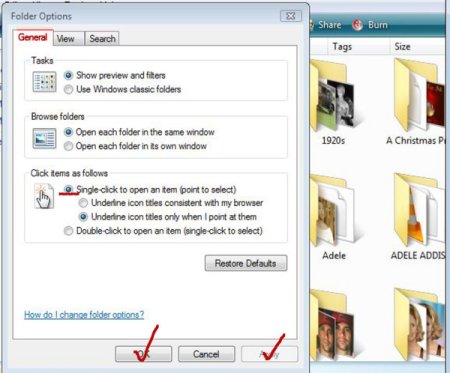

- #TOUCHSCREEN REGISTER AS MOUSE CLICKS PSYCHOPY MOVIE#
- #TOUCHSCREEN REGISTER AS MOUSE CLICKS PSYCHOPY MANUAL#
(If you set a value to an empty string, '', there won’t be a default value.)įor example, if you’d like a dialog box in which the participant number can be filled in, you can do the following: This class needs a single mandatory argument upon initialization: a dictionary in which the keys represent the dialog’s fields (e.g., “participant_id”) and the values represent the default for each field. The psychopy.gui module contains different classes to create dialog boxes, but arguably the easiest one to use is the DlgFromDict class. The equivalent functionality in the Coder interface is implemented in the psychopy.gui module. In Builder experiments, you can implement this in the Experiment settings (under the Basic tab).
#Īs you can see, the Experiment runner shows your print statement remember this, as it is a nice way to debug your experiments! Dialog boxes #Īrguably the first step in many experiments is providing the experiment with some information about the current session, such as the participant number, condition the participant is in, etc. # Running:/Path/to/your/file/emo_stroop.py # PsychoPy 4 evah # Experiment ended.
#TOUCHSCREEN REGISTER AS MOUSE CLICKS PSYCHOPY MANUAL#
Check out PsychoPy’s reference manual for a complete overview of the package’s modules.Īs you will see, most of PsychoPy’s functionality (like the different components) is implemented in custom classes, so your experience with object-oriented programming as discussed in week 1 will be very useful!
#TOUCHSCREEN REGISTER AS MOUSE CLICKS PSYCHOPY MOVIE#
For example, the visual module contains a class to specify and create a window and a large set of visual components (like text, image, and movie components) and the event module contains code to work with “events” such as mouse clicks/movement and keyboard presses. The psychopy package contains different modules for different features. However, as mentioned on the Getting started page, getting the psychopy package to work is not easy, which is why we recommend the “batteries included” standalone version of PsychoPy. If you plan on programming your PsychoPy experiment (so not use the Builder interface), you technically do not need the entire “standalone” PsychoPy package installing the psychopy Python package would suffice and you could just write your experiments in your favorite editor (like Visual Studio Code). Whereas the Builder interface generates such code from your graphical experiment, in the Coder interface you’ll write your experiment using functionality from the psychopy package directly! If you look at this generated Python script closely, you’ll see that most of the code is based on functions and classes from the psychopy Python package. When using the Builder interace, you’ve seen that, “under the hood”, PsychoPy converts your Builder experiment to a Python script, which is then executed to run your experiment. This time, we will create a variant of the classical color-word Stroop task, the emotion-word Stroop task, in which participants are presented with images of emotional facial expressions in combination with words describing emotions that are congruent with the images (e.g., an angry expression with the word “angry”) or incongruent with the images (e.g., a happy exression with the word “angry”). Like in the previous Builder tutorial, we will explain the concepts by walking you through the process of programming a real experiment. It will be a somewhat more “dry” tutorial because we won’t actually create any stimuli or trials in this tutorial, because we’ll save that for the next tutorial. Introduction to the PsychoPy Coder (tutorial) #Īt last, we’ll discuss the PsychoPy Coder! In this tutorial, we explain the basics of the Coder interface.


 0 kommentar(er)
0 kommentar(er)
